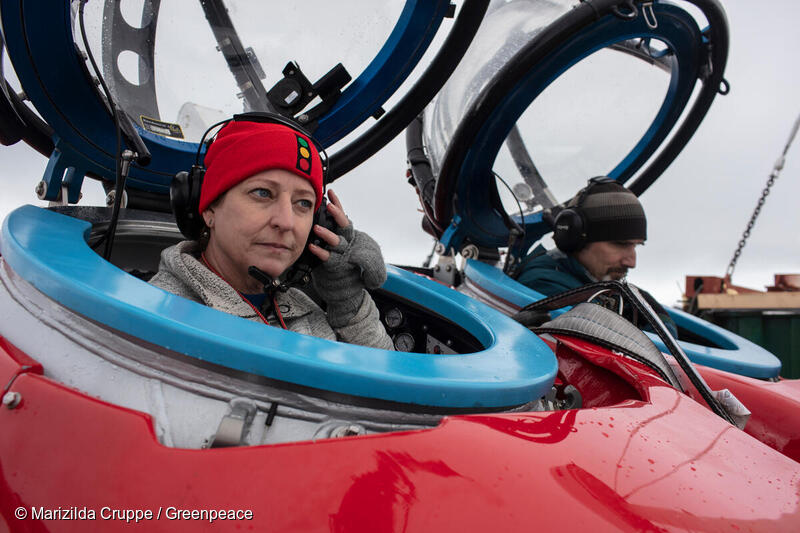Sometimes you have to go to the ends of the Earth to prevent the end of the Earth.

The Greenpeace ship Arctic Sunrise has returned to the Antarctic Peninsula with scientists Susanne Lockhart and Rachel Downey for a series of dives with a submersible to explore the sea floor. Greenpeace is conducting scientific research and documenting the Antarctic’s unique wildlife, to strengthen the proposal to create the largest protected area on the planet, an Antarctic Ocean Sanctuary.
Campaigners, crew members, researchers, and scientists from throughout Greenpeace’s global network are heading back to Antarctica with the Greenpeace ship Arctic Sunrise and a small but mighty two-person submarine called the DeepWorker.
The mission is to build support for ocean sanctuaries, the best tool there is to protect marine biodiversity, rebuild depleted populations, and give our oceans a fighting chance to survive the damage humans are causing from climate change, overfishing, and plastic pollution.
As we all know, the situation here on Planet Ocean has gotten pretty serious. It is easy to lose hope, and give in to cynicism or despair. I will admit I have my moments too.
But 2022 may well go down in history as the year things started to turn around for our oceans. Many years of work, with support from millions of people all over the world, have set the stage for some truly massive breakthroughs. This expedition is a sort of last-ditch effort to make sure we do not squander these opportunities.
This year, we expect the United Nations to finalize negotiations on a Global Ocean Treaty. If we get it right, it will enable us to scale up sanctuaries for the first time. We may even be able to go from the 2 percent of the oceans currently protected to the 30 percent by 2030 that most scientists agree is needed. And things are looking up!
While I quarantined in Chile, waiting to board the ship, senior U.S. officials affirmed their desire to see the treaty adopted this year with new high seas sanctuaries to follow.
Meanwhile, CCAMLR, the international body responsible for taking care of the waters around Antarctica, is considering proposals to create the two largest sanctuaries in the world. We are heading down to the Antarctic Peninsula and the Weddell Sea to help show the world what is at stake, in hopes that we can build a strong enough swell of support that the sanctuaries will be approved when CCAMLR meets in October.
At the heart of our effort are two scientists, both women, both experts on the ecology of the Antarctic seafloor. As the pilot of the sub, I will bring them down to the bottom of the ocean to survey areas no human has ever visited before. The video surveys will help strengthen the science underpinning the big sanctuary proposals, and may also enable us to quickly protect several smaller areas. If we are able to document corals, sponges, and other animals that provide habitat for other creatures, they will be designated as Vulnerable Marine Ecosystems and closed to fishing.
In our last expedition, half of our dives led to new closures, so we have high hopes for this one!
